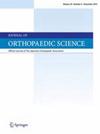日本某地区骨库同种异体骨移植情况调查。
IF 1.4
4区 医学
Q3 ORTHOPEDICS
引用次数: 0
摘要
背景:在大型骨缺损重建手术中,近年来对同种异体骨移植的需求不断增加;然而,目前还不清楚日本地区骨库的供需是如何随着时间的推移而演变的。本研究调查了地区骨库中储存的同种异体骨移植15年的供应和需求,并评估了筛选过程的有效性。方法:目标期为2005年4月至2020年3月,共15年。这一时期被细分为三个5年期:第一、第二和第三。研究项目包括捐赠的同种异体骨移植数量、使用的同种异体骨移植数量、供体和使用者的设施、使用同种异体骨移植的手术方法以及丢弃的同种异体骨移植数量。采用Cochran-Armitage检验进行统计分析。结果:共向骨库捐献同种异体骨1852块,使用1721块。第一期共提供同种异体骨移植677例,第二期738例,第三期525例,呈下降趋势。第一次手术平均每次移植同种异体器官2.8例,第二次手术平均每次移植3.1例,第三次手术平均每次移植1.7例,呈下降趋势。关于使用同种异体骨移植的每次手术的百分比,脊柱融合在第三期减少但不明显,而原发性髋关节置换术在第三期显著增加。丢弃的同种异体骨移植总数占捐献同种异体骨移植总数的4.8%,主要原因是缺乏筛选试验。结论:虽然同种异体骨手术数量不断增加,但同种异体骨供体数量呈下降趋势,需要开发一种系统,为外科医生提供足够的同种异体骨移植。本文章由计算机程序翻译,如有差异,请以英文原文为准。
The survey of bone allograft transplantation in a Japanese regional bone bank
Background
In reconstructive surgery for large bone defects, the demand for bone allografts has increased over the years; however, it is unclear how the supply and demand in Japanese regional bone banks have evolved over time. This study investigated the 15-year supply and demand of bone allografts stored in a regional bone bank, along with assessing the screening process's effectiveness.
Methods
The target period was 15 years from April 2005 to March 2020. The period was subdivided into three 5-year periods: first, second, and third. The study items included the number of bone allografts donated, the number of bone allografts used, donor and user facilities, surgical methods using bone allografts, and the number of bone allografts discarded. We used the Cochran-Armitage test for statistical analysis.
Results
A total of 1852 bone allografts were donated to the bone bank, and a total of 1721 were used. A total of 677 bone allografts grafts were provided in the first period, 738 in the second period, and 525 in the third period, indicating a decreasing trend. The average number of allografts per surgery was 2.8 in the first, 3.1 in the second, and 1.7 in the third, showing a decreasing trend. Concerning the percentage of each surgery using bone allografts, spine fusion decreased in the third period but not significantly, whereas primary hip arthroplasty increased significantly in the third period. The total number of discarded bone allografts was 4.8% of the total number of donated bone allografts, largely because of a lack of screening tests.
Conclusion
Although the number of allogeneic bone surgeries has been increasing over time, the number of allogeneic bone donations has shown a decreasing trend, and there is a need to develop a system that can provide surgeons with sufficient bone allografts.
求助全文
通过发布文献求助,成功后即可免费获取论文全文。
去求助
来源期刊

Journal of Orthopaedic Science
医学-整形外科
CiteScore
3.00
自引率
0.00%
发文量
290
审稿时长
90 days
期刊介绍:
The Journal of Orthopaedic Science is the official peer-reviewed journal of the Japanese Orthopaedic Association. The journal publishes the latest researches and topical debates in all fields of clinical and experimental orthopaedics, including musculoskeletal medicine, sports medicine, locomotive syndrome, trauma, paediatrics, oncology and biomaterials, as well as basic researches.
 求助内容:
求助内容: 应助结果提醒方式:
应助结果提醒方式:


